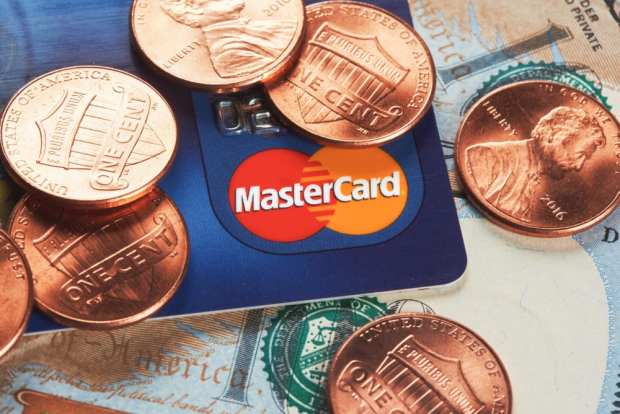Mastercard Revs Its Payments Innovation Engine

Take a minute and think of the morning rush at a favorite coffee shop.
The beverages roll off what amounts to an assembly line before landing on the far counter. Consumers’ names are written in marker on the sides of the cups, with the baristas sometimes exchanging personal greetings with their regular customers. It’s a mix of mass, frenzied activity and personalization. It’s a place where a person can feel lost in a group of like-minded people in need of a caffeine fix, but also where, for one vital moment, an individual’s specific preferences are often remembered and recognized by another human being.
That provides a rough idea of some of the motivation behind Mastercard’s latest effort in payments and commerce innovation — an effort described in depth in a new PYMNTS interview between Karen Webster and Amnah Ajmal, Mastercard’s executive vice president of core products.
Not Just A Number
The general idea is to use all those mountains of growing consumer data — all that information that intimately describes their likes, preferences, daily and non-daily behavior — in such a way that helps those consumers get more out of their cards, payments and retail activities, which in turn helps issuers, merchants and the payment card network itself. The goal is to bring a higher level of personalization to daily consumer life in the digital economy, which can often seem vast and anonymous, and do so in ways that don’t come across as creepy.
“Customers don’t want to be treated like a number,” Ajmal told Webster. “They want to be treated like a person.”
That’s a tall order, to say the least. It represents one of the highest ideas of digital payments and commerce: to provide consumer experiences instead of mere transactions. One approach — the approach taken by Mastercard — is to deploy an API-based digital platform that enables issuers and merchants to provide digital capabilities to customers.
Launched earlier this week (May 14), the Mastercard Innovation Engine is a plug-and-play platform that brings together Mastercard assets and FinTech services to provide enhanced customer experiences.
Mastercard said the first service leveraging the Mastercard Innovation Engine is focused on enhancing the experience consumers have with their card benefits and rewards. Created with Flybits and Kasisto, and dubbed the Mastercard Contextual Engagement Solution, it provides U.S. issuers and merchants with a digital channel so consumers can better interact, and maximize their card benefits and rewards. The company said the data contextualization capabilities of Flybits and the conversational capabilities of Kasisto enable issuers and merchants to create personalized experiences for customers at the correct time.
Better Rewards
So, what does that all mean in the real world?
Think again of that favorite coffee shop. As Ajmal told it, the technology can tell that a particular consumer “buys coffee every morning on the way to work, from the same shop at the same time,” thanks to geolocation. The technology can also “see that you are not redeeming points” earned via the cardholder loyalty program. “What if you receive a notification on your phone” during that coffee-buying time of day that provides an offer to receive free coffee every morning for a month via those unredeemed points? “That would make you feel pretty special,” she said.
It’s not just coffee — though such a common product is always a good place to start when it comes to payments and commerce innovation (just look at some recent developments from the QSR world). Ajmal said the new Mastercard offering could take note of certain big life changes — a new house, a move to the suburbs — to enable issuers and merchants to tailor offers based on changed customer preferences.
Perhaps, she said, it makes less sense to offer consumers multiple, unsolicited offers for dining-out discounts if the technology notices he or she has not been recently engaged in that particular customer activity. That consumer might be more open to other offers, though — and finding that right level of personalization would not only result in gains for participating merchants and issuers, but would serve to increase that customer’s loyalty.
FinTech Role
Personalization isn’t the only factor behind the Mastercard Innovation Engine. It also stands as a recent example of the evolving relationship that payment service providers are building with FinTech firms — another hot trend in the world of digital payments. Assuming they make it past the Mastercard vetting process, FinTech firms and others can plug into this new Mastercard offering, and basically select the payment and commerce “use cases” they want to enable, Ajmal said. They don’t have to go through all the massive hassles of more traditional connectivity and distribution.
Make no mistake, though, the idea isn’t really about creating an innovation “marketplace,” she told Webster, but to “have consumer experiences that are meaningful.” Indeed, that’s the name of the game for much of what’s driving innovation in the wider world of eCommerce and digital payments. After all, Ajmal pointed out, a full generation or so of online retail training has resulted in higher standards and expectations for consumers when it comes to digital experiences (including personalization), and those demands and desires are spilling over into pretty much all aspects of payments.
So, what’s next? “We are working on a broad range of use cases,” Ajmal said, which will focus on further enabling bank and merchant partners to provide enhanced digital experiences for consumers.
Enjoy that morning coffee and take note. Yes, in many respects, a consumer is a number, a nugget of daily data. However, if trends hold, digital payments and commerce technology will find new ways, ironically enough, to make them feel more like their own person.
